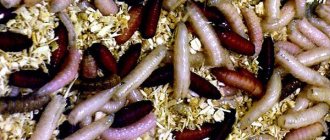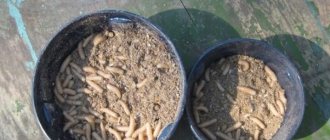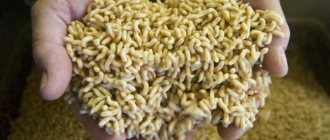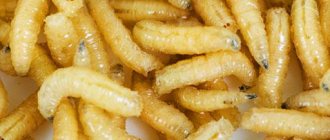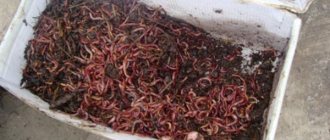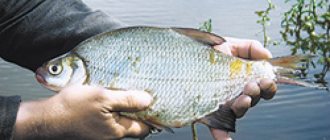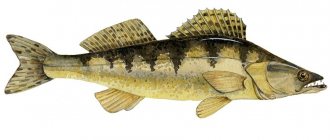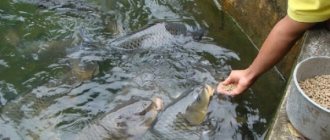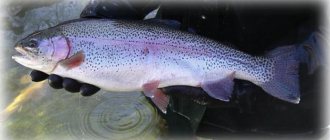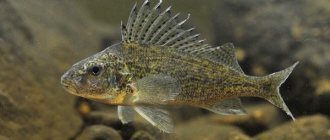Leader among lures
Nowadays there are many different baits that are suitable for catching all types of fish. True, none of them has yet been able to surpass the success of the most common maggot, which can be used as an independent bait. It is also added to bait. Protein, easily digestible food has always attracted fish.
It is worth noting that this is one of the most popular baits among fishermen in our country, which means that every self-respecting fisherman should always have it in stock. But it is not always found in specialized stores, and its cost is quite significant. All these inconveniences can be avoided if you decide to grow maggots for fishing at home.
Meaning in nature
Flies become carriers of diseases unwillingly. And in nature their significance is enormous. Starting with the fact that these insects and their larvae are an important link in the food chain.
In addition, without flies our planet would be covered with a layer of rotting organic matter. By repeatedly passing organic waste through themselves, fly larvae return minerals and chemical elements to the cycle of substances in nature.
Many representatives of these dipterans are plant pollinators. And some (for example, blackbirds of the Asilidae family) are active predators that regulate the number of other insects. And, by the way, they are used as biological weapons against pests of forests and fields.
Advantages
The advantages of this bait are obvious and known to all anglers:
- It simply fits onto the hook and stays on it perfectly, so it can be used on both bottom and float gear.
- Very active and mobile, it wriggles wonderfully on the hook, attracting the attention of the fish.
- Can be used to prepare a wide variety of baits for almost all types of fish.
- Easy to store.
- Easy to grow at home.
Therefore, the question of how to grow maggots for fishing yourself is very relevant for many outdoor enthusiasts with a fishing rod in their hands.
Varieties
The presented type of bait is nothing more than the larvae of ordinary flies. Depending on the breed of insects, the following types of maggots are distinguished:
- Common type of larvae. They are laid by meat or cheese flies up to one and a half centimeters long. He has thick skin. It is also worth noting that they have no buoyancy at all. This species pupates quickly. Can be refrigerated for up to 3 weeks.
- Gozzer. This is the larva that the black and blue fly lays. It grows up to two and a half centimeters in length and is the best bait for catching large fish. However, it is practically not found in our climate zone.
- Pink. Steel-colored fly larvae. Such larvae are considered the most popular type. The maximum length is no more than a centimeter. They are very active on the hook, which is great for attracting fish.
How to grow maggots at home? Let's look at the most popular methods.
Flies are different
When we talk about flies, we mean representatives of the order Diptera, class Insecta, of which there are about 75 thousand species.
Some varieties are harmless, others sting and bite. There are flies whose reproduction goes through several stages, and there are also viviparous ones. They live all over the globe. But with all their diversity, in this article we will talk about synanthropic species of flies - those that live in close proximity to us. We know them well, these are:
- House fly (Musca domestica).
- Blue (Calliphora vicina) and green (Lucilia sericata) blowflies.
- Fruit fly or fruit fly (Drosophila melanogaster).
In addition to these most famous representatives, 5 more species of burner flies, representatives of the family Hippoboscidae, live in Russia. In appearance they are similar to house flies, but the difference is that live flies (autumn, horse, sheep) are active bloodsuckers. They are the ones who sting people and animals in late summer and autumn.
And yet most flies feed on any organic matter. But they prefer sweets more. Moreover, they can distinguish sugar from saccharin unmistakably. Although there are specialized types. For example, the larvae of cheese flies (Piophila casei) feed exclusively on cheese.
In the egg
How to grow large maggots? The simplest way is in an egg. Its advantage is the minimum cost of money, time and effort. The disadvantage of this method is that only a few larvae can be grown in one egg (twenty or thirty pieces). But it can be easily compensated for by using several eggs.
How to grow maggots using the presented method:
- Boil an egg. It must be hard-boiled.
- You will need to remove the shell from the top.
- In this form, the workpiece should be left in a shaded place in the open air.
- When the product goes rotten, flies will flock to it. They will lay their eggs inside.
- The hatched larvae will grow in the shell without falling out of it. You can place the eggs in a special container with dry filler (sawdust, wood shavings, etc.). If the larvae manage to get out of the shell, they will still remain in the litter.
Once the desired size is reached, the bait is easily removed from the shell.
Blank - container from a container
It is advisable to use a container with high walls. We make a removable box from a fine-mesh mesh, which is slightly submerged inside the vessel. The holes must be such that an adult maggot, which will be used for attachment or added to fishing bait, can fit through at least 3 mm.
Pour the litter - a little, a few centimeters.
We put something protein on the grid. Poultry giblets, chicken, meat, fish, etc. are suitable. There was minced pork available, so it went into action.
Cover with a lid (for shading only). In the same way, we tie a loop of fishing line through the punctured holes in the side walls.
In the liver
This method requires a whole cow's liver. How to grow maggots on it?
- Hang the liver on a hook and leave it in the air for two to three days.
- After the flies lay their eggs, the liver must be transferred to a closed container, having first filled it with dry filler.
- When the larvae emerge from the eggs, you need to add bran to them, and then let them grow. The length should be approximately a centimeter.
- Transfer the contents to an open container with dry filling. Then you will need to feed them meat or liver for a couple more days.
The growing process when using liver lasts no more than one week.
Hardness of maggots
The time it takes to bait a maggot on a hook to catch fish should be kept to a minimum. To do this, the bait must have a hard skin and thus remain on the hook for as long as possible.
Before fishing or fishing competitions, you should transfer the maggots to a container with cornstarch. The cornstarch will stick to the larvae's skin and become thicker. But one super-hard grub can catch several fish. This hardening and curing will take about two weeks, so it must be planned in advance. Maggots that have a hard skin should be stored in a cold basement. Larvae are not as active in a cold room and corn starch remains on their skin for a long time. At a temperature of 2-4 degrees, maggots remain motionless. They should be stored in small boxes. Near water, maggot fish bait should be protected from the sun to prevent it from deteriorating and dying.
→
In a bottle
How to grow maggots at home without any special equipment? It's very easy to make this in a plastic bottle. To do this you need:
- Cut the top off the bottle.
- Pour dry filler into the bottom part.
- The cut off top (after unscrewing the lid) must be inserted into the lower part. The neck should point downwards.
- You will need to place meat or liver in the upper part.
- The structure is left outdoors.
- When the insects lay eggs, the bottle should be placed in a shaded place.
- After a few days, the future bait will crawl to the bottom of the bottle.
To grow maggots at home, you can make a more complex device.
How to grow maggots at home
There are many ways to grow maggots at home:
- For example, using a chicken egg:
- Boil three chicken eggs.
- Cool thoroughly.
- Remove the top shell from the egg and one centimeter of the white.
- Place it outside (under a tree, in any shade, etc.).
- Leave it in this position for several days (five to six) so that it becomes rotten and blue flies begin to fly to it.
- After this time, the flies should lay many larvae on their eggs, which will subsequently hatch into small, hungry maggots.
- You need to feed maggots with meat or raw fish.
- Using a bottle. For this method of breeding maggots, you should follow the following algorithm:
- Take a clean two-liter bottle (plastic bottles from beer or other drinks work very well).
- Carefully cut small holes about three centimeters in size on the top of this bottle.
- Throw chicken giblets (intestines, stomach, etc.) and pieces of pork or chicken meat into these holes at the bottom.
- Hang it in a well-sunny area.
- Leave in this position for four days. During this time, blue flies will lay enough larvae to form live maggots.
- Breeding maggots in the liver. To do this you should:
- Take a small piece of veal or pork liver (no more than half a kilogram).
- Make shallow transverse cuts on it so that blood flows from both sides.
- Place the liver on a strong hook and hang it at a high distance.
- Leave it for five days, then remove it and put it in a deep container with sawdust (a bucket with a lid works great), and wait a little longer.
- After just two days, you can collect ripe maggots.
- Breeding maggots in fish. To do this you need:
- Cut the raw fish a little, but do not remove the insides.
- Place it in a large bottle with holes and hang it in the sun in a remote place, because the decomposing fish will give off a terrible smell.
- Wait four days and then transfer the fish to a container with wood shavings.
- Feed the larvae meat with raw fish.
- Breeding on sawdust. To do this you need:
- Pour a small layer of sawdust into a bucket.
- Leave small pieces of meat in the sun so that flies have time to lay larvae on it.
- Carefully place the meat on the sawdust and sprinkle a little more on top.
- Wait five to six days, after which you need to use ready-grown maggots.
There is no need to feed maggots anything special. The piece of meat or fish in which they originally started will be enough for them.
Special device
Many fishermen strive to grow bait so that contact with it is minimal. For this purpose, you can design a special device. It consists of three containers of different volumes, which are inserted into one another.
- Place meat or fish in the top container. It is closed with a lid with holes. It should also have a holey bottom.
- The middle container also has holes at the bottom. Dry filler is placed in it.
- The lower container is filled with the same filler and serves to collect clean larvae.
The operating principle of this device is as follows:
- Meat or fish is placed in the upper part and the device is placed in a shaded place where flies can find it.
- If after two or three days the insects lay eggs, the top part is covered with a lid with holes. The manufactured device is placed in the designated place.
- The grown larvae fall through holes in the bottom into the middle part.
- After passing through a layer of dry filler, the larvae are cleaned and fall into the lower container. From here they are removed and placed in jars for storage and further use.
The whole process lasts from seven to ten days depending on the air temperature.
Blitz tips
- It is better to take a tall container with a round or oval shape to store maggots. In a square bowl, maggots will be more crushed.
- The layer of maggots in one container should be no more than three centimeters, since if you store a lot of maggots in one container, the lower layer of larvae will be in poor condition.
- If maggot larvae are frozen or die for other reasons, they do not need to be thrown away. They are perfect for use as complementary foods.
- It is advisable to store maggots away from food, since they are all fly larvae and can be harmful.
- When transporting maggots, they should not be mixed with red earthworms or other live bait (grasshoppers, mole crickets, flies), otherwise you risk being left without bait, since these voracious larvae sweep away everything that gets to them.
- For greater efficiency, you can hook several different maggots at once, which differ in smell, color and storage method. This way, you can determine which method of preparing larvae the fish responds to best and use it in the future.
Breeding for sale
Growing insect larvae as a business can be done all year round. How to grow maggots in winter? The same as in the summer. This will require a specially equipped room with a constant temperature of no higher than 25 degrees and good ventilation in places remote from general residence. In this room, containers for hatching larvae and cages for keeping insects are installed.
The nets consist of a metal or wooden frame with a fine mesh stretched over it. The walls of such containers are equipped with special sleeves for installing and removing containers with substrate. The principle of breeding is no different from breeding larvae for one’s own needs. The only difference is in scale.
The bulk of the resulting material is sold, and some is left for pupation to maintain or increase the insect population.
How to set up a room for growing maggots
The farther the “base” where maggots will be grown is located from residential premises, the fewer problems you will have with your neighbors. During growth, maggots emit an unpleasant odor of ammonia, and if there are 50, 100 or even more larvae, the smell will spread throughout the area and this will naturally cause dissatisfaction among neighbors.
It follows from this that the premises you need must be located in the country or in the village. it will also be possible to breed worms here - they are also in great demand among fishermen.
Of course, in order to increase your profits, you need to create conditions that are optimal for the appearance of high-quality maggots and increasing their growth rate. These conditions can be achieved in three ways:
- Temperature: from 23 to 25 degrees Celsius must be maintained in the room at all times. “Jumps” in temperature significantly affect the size of the larvae, although they are unlikely to kill them;
- The air humidity in the room should be maintained at about 50-70%, since these are ideal conditions for rapid reproduction of larvae;
- Ventilation of the room: ammonia, which is released by maggots, is not only harmful and unpleasant for people, but also toxic. However, you should not ventilate too much, as the larvae do not like this.
In addition to the above, you should carefully close the room so that foreign flies and other insects that like to chew rotten meat do not penetrate there.
Bait Recipes
To increase the attractiveness of this type of bait for fish, many hobbyists invent various ways of preparing it. Let's look at some of them.
- Pickling. This recipe was invented by English fishermen. This type of bait holds onto the hook more firmly. First, the larva is marinated in vinegar for an hour, then dried with a napkin or baked in the oven. Suitable for larvae that have already been stored in the refrigerator for a long time and may spoil.
- With egg. This recipe was invented in Poland. Before fishing, the larvae are fed the yolk of a hard-boiled egg. This makes them look attractive to fish. After such a meal, the larvae become yellow.
- Many people believe that fish bite better on red larvae. To dye the bait this color, it is dipped in milk with beet juice or food coloring. For coloring, you can also use water with the addition of potassium permanganate, iodine, brilliant green or food paint.
- Boiled. Cook in hot water over low heat for five minutes, without bringing to a boil.
- If it is not possible to properly store the material in proper conditions, some fishermen freeze it and allow it to thaw before use. However, this option is not very effective, since live bait looks much more attractive to fish. Sometimes various flavors are added to the bait. To prepare them, use a decoction of sawdust. They are filled with water in a ratio of one to two and garlic, vanillin, corvalol, anise, hemp grains, etc. are added as a flavoring. After boiling, the mixture is boiled for three minutes, and after cooling, the sawdust is squeezed out and dried in the microwave.
By properly preparing for a trip to a pond, you can count on a big catch. Of course, you can always purchase larvae at the appropriate store. However, it is much more profitable to grow them yourself. The result will exceed all expectations, and fishing will bring a lot of positive emotions. You will always have a supply of fresh bait, which you can take with you fishing at any time.
How to color and flavor bait
In order to properly flavor the maggot and give it a special smell, all kinds of aromatic agents are used.
The most suitable components for this purpose are the following:
- garlic;
- dill;
- coriander;
- cocoa;
- vanilla;
- vegetable oil;
- Corvalol;
- decoction of sawdust.
Flavoring of maggot larvae occurs according to the following plan:
- Add a small amount of one of the ingredients to the pan and add water.
- Bring to a boil and season with a small amount of wood shavings.
- Leave to brew.
- When the broth has cooled, remove all the ingredients from the pan and sprinkle them over the maggots.
Fishermen do this procedure so that the larvae acquire a specific odor to which the fish can react and bite.
The following dyes can be used to color larvae:
- iodine;
- brilliant green;
- manganese;
- food colors (red, green, yellow and other colors).
The dye must be diluted in water and the maggots must be dipped into it several times so that it changes color. It is very important not to squeeze the larva, otherwise it will lose its elasticity and will not hold well on the hook.
The larvae need to be painted so that they are more visible at depth or in muddy water. Bright maggots show many times more efficiency than ordinary white ones, so they are in great demand in fishing markets.
